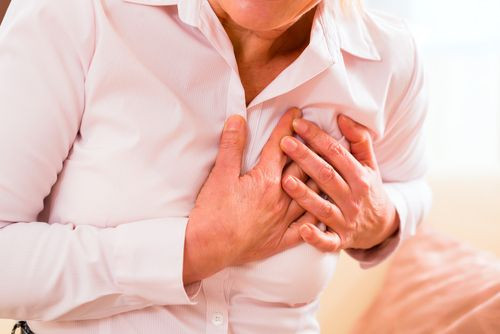Sjögren's Syndrome Increases Risk For Stroke And Heart Attack Within First Year Of Diagnosis

People suffering from Sjögren's syndrome (SjS) are more prone to heart attacks and strokes, especially in the first year after diagnosis, according to a new study presented Friday at the European League Against Rheumatism Annual Congress (EULAR 2014).
The lead author of the study, Dr. Antonio Aviña-Zubieta, a research scientist and assistant professor said, "it is the acute inflammatory state in Sjögren's syndrome, particularly at the onset of the disease, which is likely to be the main driver for the increased risk of heart attacks and stroke.” The acute inflammation of the fluid glands results in symptoms like painful burning in the eyes, dry mouth, and sometimes dryness in the nasal passages, throat, vagina and skin, which are collectively called sicca symptoms. In more severe cases, it can result in neurological complications.
SjS is a chronic, slowly progressive, inflammatory, connective tissue disease in which there is an immunological attack on the exocrine or moisture-producing glands of the body, such as the lacrimal glands that produce tears and the salivary glands. The condition occurs when T and B lymphocytes infiltrate these glands that results in inflammation. As with other autoimmune diseases, the exact cause of SjS is unknown, but genetic factors, hormonal imbalance, or other external factors like bacterial or viral infection are thought to trigger this condition.
SjS is classified as primary if it occurs by itself and secondary if there is another connective tissue disease present like systemic lupus erythematosus (SLE) and rheumatoid arthritis (RA). Estimates of the prevalence of SjS in patients with RA and SLE vary from 30 percent and 110 percent, respectively. It is estimated that worldwide, 0.2 percent of the adult population suffer from primary SjS. The condition mostly affects women, irrespective of age and race, though it's rare in children.
The present study assessed the risk of heart conditions in SjS patients by conducting a population-based survey. “This is the first general population-based cohort study comparing the relative risk of heart attacks and strokes in patients with new Sjögren's syndrome with age, sex, and entry-matched controls; previously we only had limited data on the relative risks in this specific patient group,” Aviña-Zubieta said. "Our results support the role of inflammation in cardiovascular disease and the need for increased monitoring for coronary artery disease in all patients with this condition, in addition to proper management and modification of their cardiovascular risk factors to reduce the risk of a future heart attack."
The people selected for this study had been diagnosed with SjS between 1996 and 2010 on at least two visits, at least two months apart, and within a two-year period by a non-rheumatologist physician or once by a rheumatologist or from hospitalization. The incidence of heart attacks and strokes in SjS patients were compared with controls by taking age, sex, and potential cardiovascular risk factors into consideration. Out of the 1,176 cases of SjS that were monitored, 28 developed a first-time heart attack, with an incident rate of 7.7 per 1,000 person-years. Among 11,879 non-SjS matched controls, 138 had a heart attack, with an incident rate of 3.5 per 1,000 person-years.
Statistics of stroke were as follows: among 1,195 with new SjS, 19 developed a first-time stroke, with an incident rate of 5.1 per 1,000 person-years. Out of 11,983 non-SjS matched controls, 137 had a CVA (cerebrovascular accidents) event, with an incident rate of 3.4 per 1,000 person-years.
Compared with the age, sex, and entry-matched controls, the relative risks for heart attack was 2.2 and stroke events was 1.5. Considering factors like medication did not reduce the risk factor of patients with SjS developing either heart attacks, 2.4 or stroke, 1.6. The risk of developing a heart attack was 3.6 times higher within the first year following diagnosis of SjS and persisted up to five years following the initial diagnosis. This trend was not seen for strokes.
Source: Aviña-Zubieta A. European League Against Rheumatism Annual Congress. 2014.



























